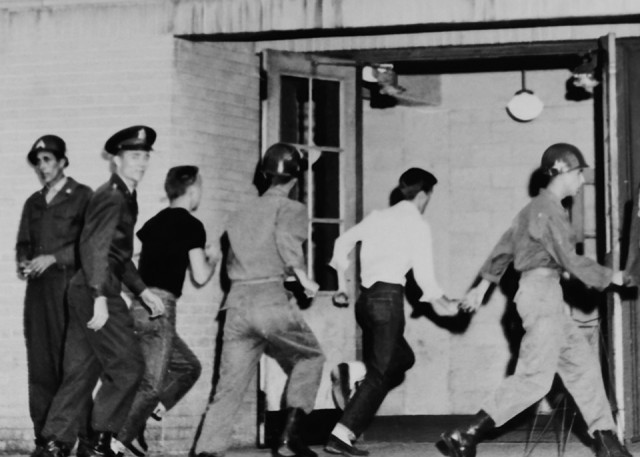
ATLANTA, Ga. — In April 1955, the National Guard’s 400,000-strong force responded to an unprecedented activation exercise.
Operation Minuteman, which was conceived by Maj. Gen. Edgar Erickson, chief of the National Guard Bureau, successfully mobilized nearly 320,000 National Guardsmen in an age long before email, social media and smartphones.
“Considering this was the first time that a nationwide alert has been held by a reserve component of the armed forces, the National Guard made a great showing,” said Maj. Gen. George Hearn, adjutant general of the Georgia National Guard, following the conclusion of Operation Minuteman. “The people of the state and nation became instantly aware of the potent force we mobilized in such a short period of time.”
The purpose of Operation Minuteman was to test the speed and efficiency with which the National Guard could mobilize en masse for a national emergency. Additionally, the operation was intended to demonstrate to the public the efficiency and readiness of the National Guard while stimulating local interest and boosting recruiting. Widespread coverage of Operation Minuteman in media outlets across the United States also provided a key deterrence message to nations of the Warsaw Pact, which was signed just 24 days after Operation Minuteman.
“We welcome this test alert,” said Col. Roy Hogan of Macon Volunteers, Headquarters and Headquarters Company, 121st Infantry Regiment, “because it will give us a splendid opportunity to test the speed and efficiency with which our units can be mobilized in the event of an emergency.”
At 3:30 p.m. on April 20, 1955, the alert notification was dispatched from Washington, D.C., to the adjutants general of the 48 states and Alaska Territory. Nationwide, National Guardsmen responding to the exercise alert filled local armories. One Georgia National Guard Soldier left his gas station job while pumping gas, handing the customer the hose with the words, “Take care of the station for me ’til I get back home!” Another Georgia National Guard Soldier of the 48th Military Police Company rushed from the hospital delivery room directly to the unit’s armory in Springfield. One Massachusetts Guard Soldier brought his 1-year-old son to the armory rather than wait for his wife to return home.

A company commander in the California National Guard reported that 70% of his personnel had reported within one hour of the alert, 90% had reported by the second hour, and all were present within three hours of the alert. Numbers were similar in Georgia. Sixty Soldiers of the Valdosta-based Company E, 121st Infantry Regiment, were on duty within one hour of the alert.
After assembling, the Guardsmen were dispatched on simulated missions. Units of the Atlanta-based 122nd Infantry Regiment established protective cordons around vital infrastructure, including power stations, waterworks and radio stations. Curious citizens witnessed Soldiers of the local 560th Engineer Battalion establishing security points bristling with machine guns in front of businesses and government buildings in Columbus, Ga. The 215th Medical Battalion of the Tennessee National Guard set up four hospital tents near its Memphis armory and ambulances were dispatched to receive simulated patients.
In addition to the myriad of Army unit movements, the Air National Guard also responded in force. Georgia Air National Guardsmen of the 116th Fighter Bomber Wing launched 24 aircraft within the first hour of the alert. Brig. Gen. Winston P. Wilson, chief, Air Force Division, National Guard Bureau, declined to give official numbers because of operational security concerns, but he said hundreds of aircraft participated in the exercise.
Operation Minuteman represented the first time in the history of the National Guard that a national-level alert was executed. The National Guard had previously conducted large-scale domestic mobilization efforts, including for the Mexican Border Service in 1916, but those mobilizations were incremental.
Erickson, formerly the adjutant general of Massachusetts, chose April 20 as the date for Operation Minuteman because it was the date that the Minuteman Companies of the Hampshire County Militia Regiment began marching to Boston following the Battles of Lexington and Concord.


Social Sharing